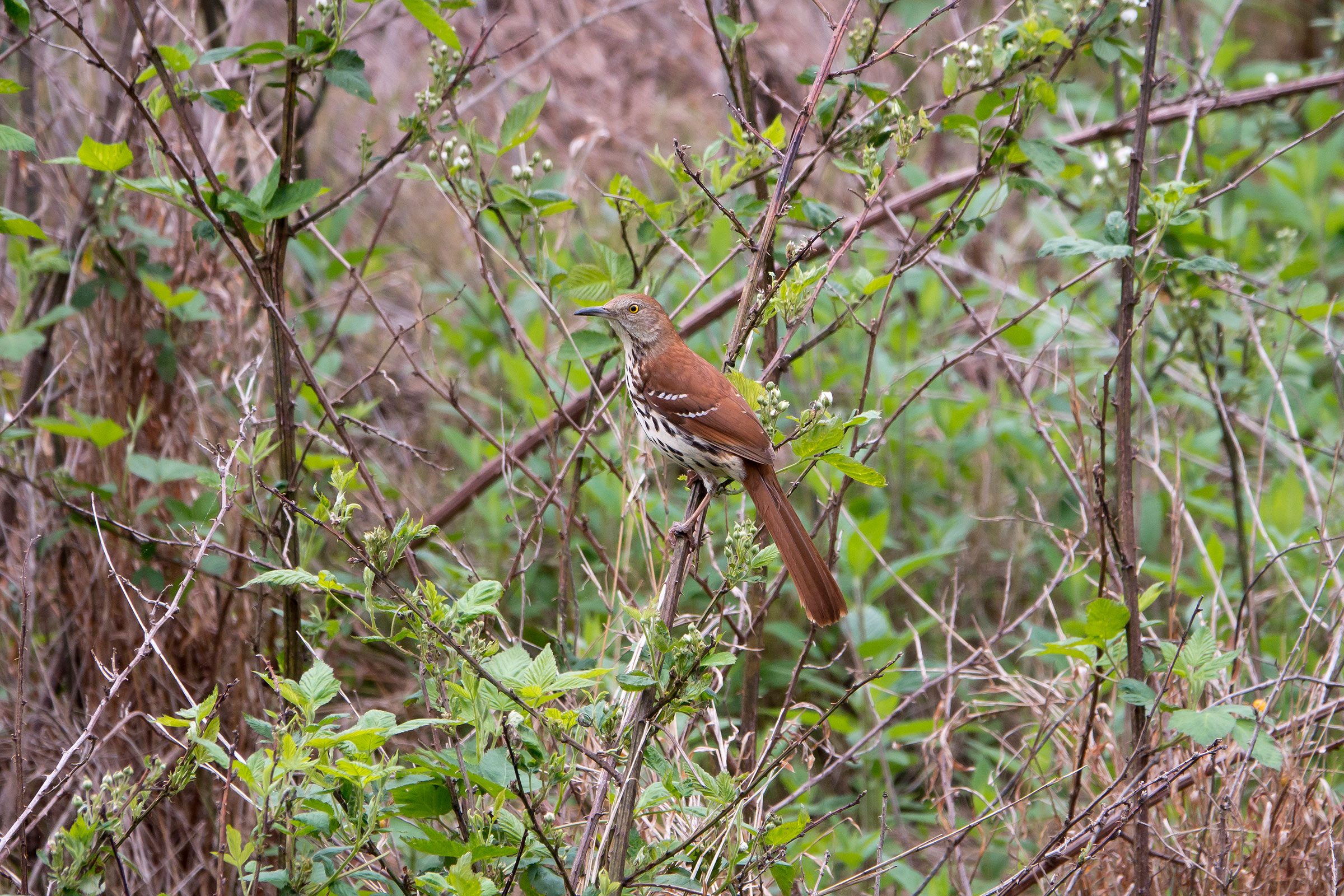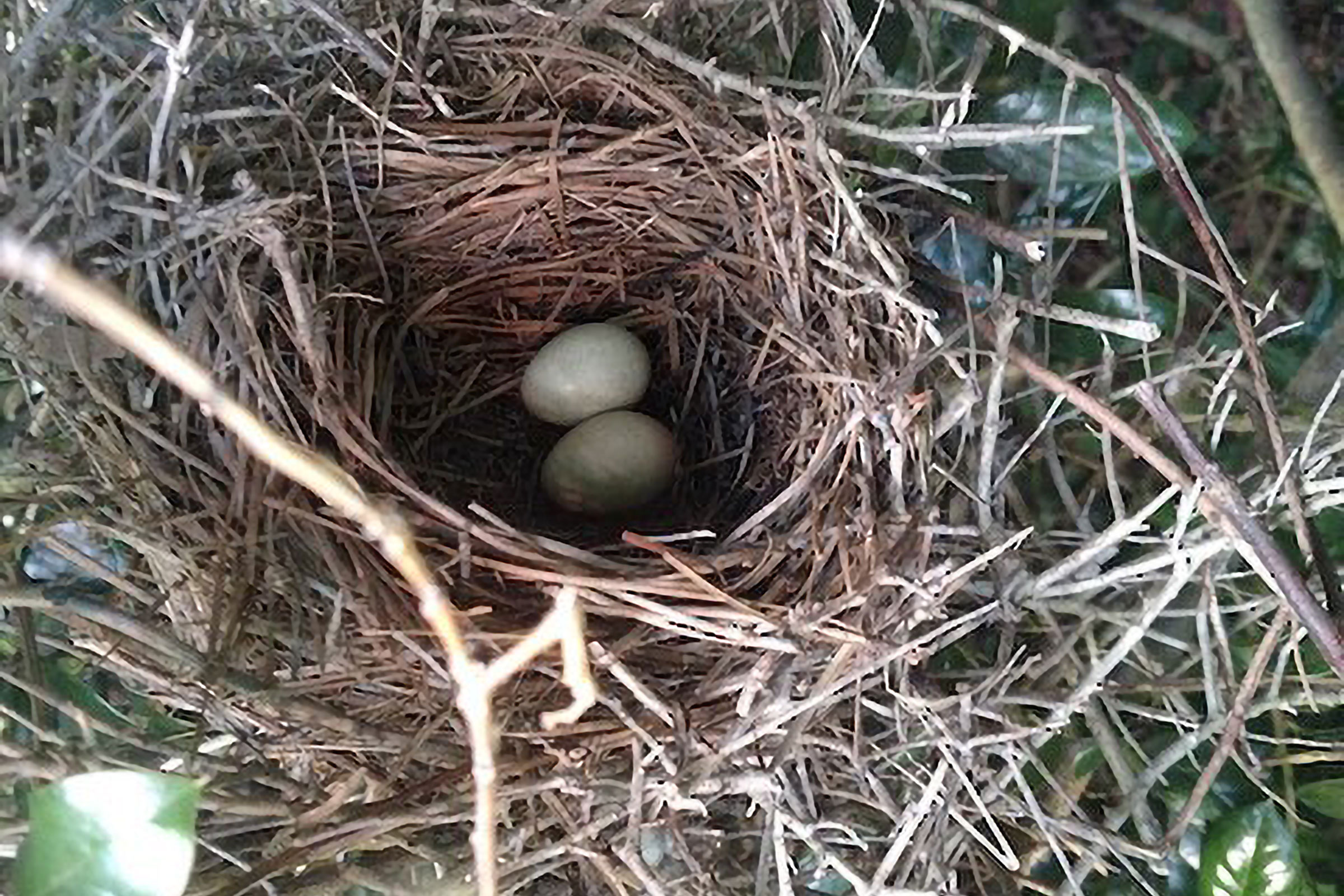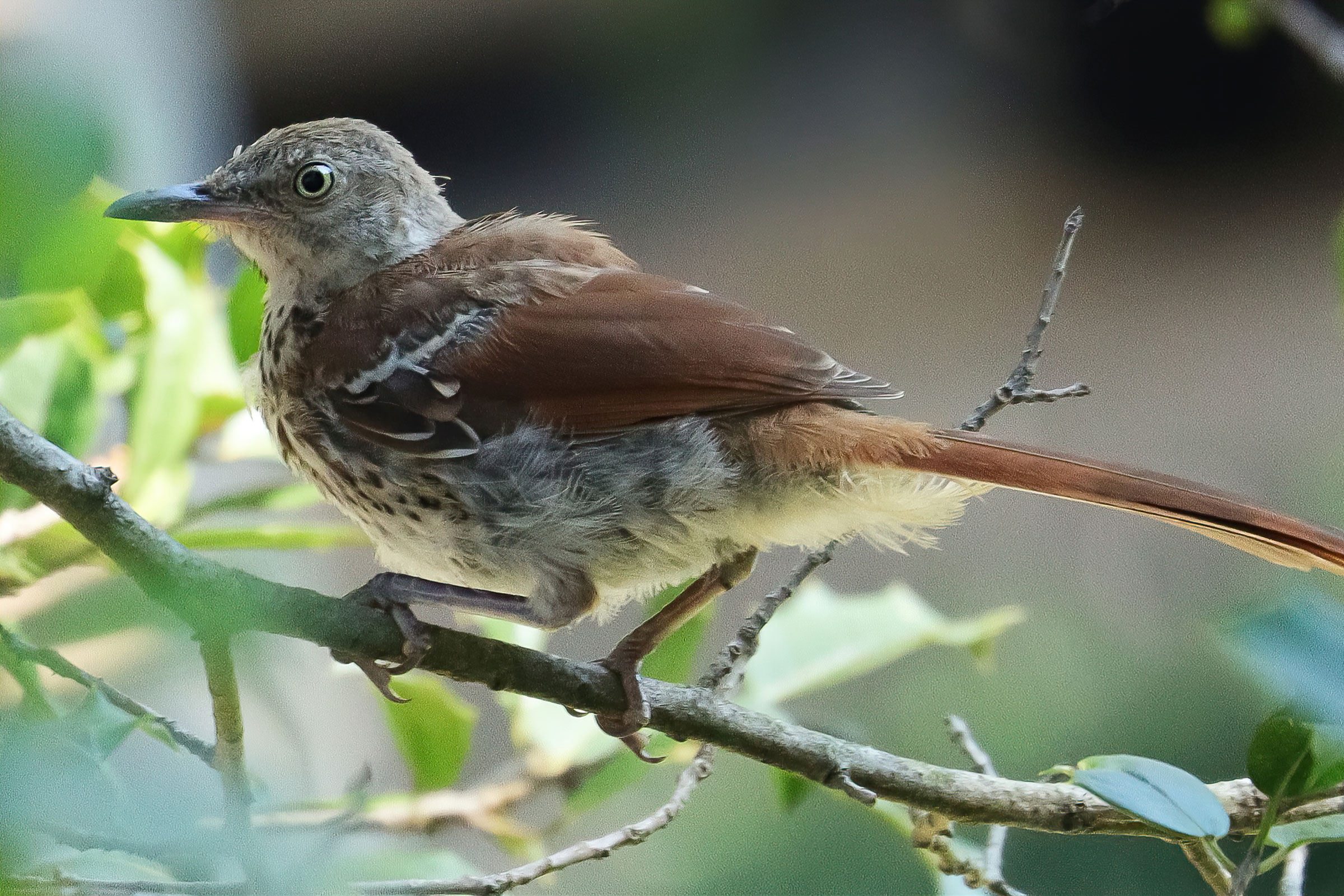Introduction
In addition to the Northern Mockingbird (Mimus polyglottos) and Gray Catbird (Dumetella carolinensis), the Brown Thrasher is known to mimic the songs of other birds that breed in Virginia, but they also have over 1,100 songs they sing (Cavitt and Haas 2020). In their complicated song repertoires, Brown Thrashers typically sing the mimicked phrases of other birds twice before moving on to another phase. Some of their favorite species to imitate are Chuck-will’s-widow (Antrostomus carolinensis), Northern Flicker (Colaptes auratus), Tufted Titmouse (Baeolophus bicolor), and Northern Cardinal (Cardinalis cardinalis) (Cavitt and Haas 2020). Brown Thrashers often remain hidden in thickets, but when they do offer a glimpse, it is a sight to behold, with their bold rust-colored bodies contrasting with intense yellow eyes.
Breeding Distribution
Brown Thrashers are found across almost all the state, with only a slightly lower likelihood of occurring in heavily forested areas in the Mountains and Valleys region and portions of the Coastal Plain and Eastern Shore, where habitats are marginal for this species (Figure 1). Brown Thrasher’s likelihood of occurring in a block increases as agricultural cover (pastures/hay and row crops) and forest edge habitat increase, indicating a preference for farmland interspersed with woodlots with ample shrubby, edge habitat.
Brown Thrasher distribution during the First Atlas and its change between the two Atlas periods could not be modeled due to model limitations (see Interpreting Species Accounts). For more information on its distribution during the First Atlas, please see the Breeding Evidence section.
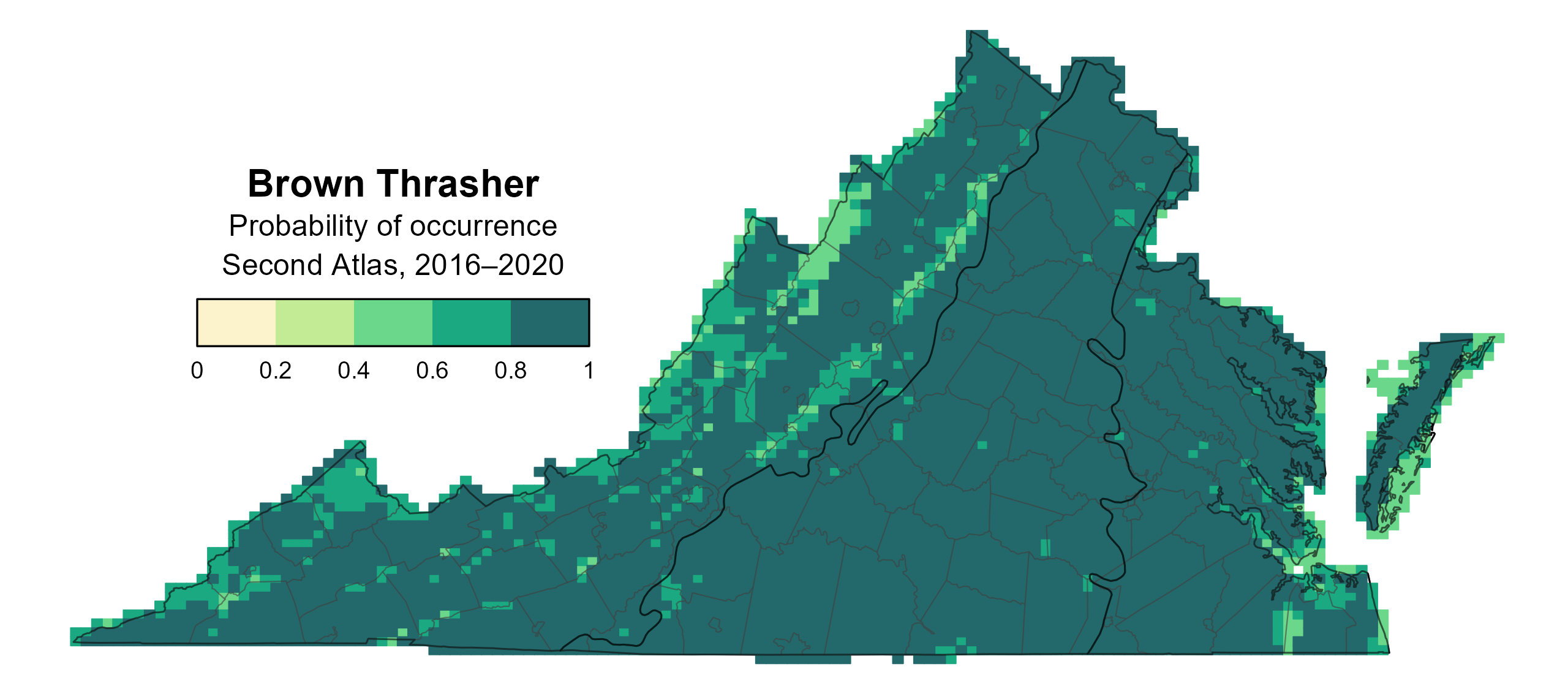
Figure 1: Brown Thrasher breeding distribution based on probability of occurrence (Second Atlas, 2016–2020). This map indicates the probability that this species will occur in an Atlas block (an approximately 10 mi2 [26 km2] survey unit) based on environmental (including habitat) factors and after adjusting for the probability of detection (variation in survey effort among blocks).
Breeding Evidence
Brown Thrashers were confirmed breeders in 859 blocks and 118 counties across the state and found to be probable breeders in three additional counties (Figure 1). Brown Thrashers were observed breeding throughout all regions of the Commonwealth during the First Atlas as well (Figure 3).
The earliest confirmed breeding behavior was recorded on March 10 when Brown Thrashers were observed carrying nesting material. However, most breeding was confirmed through observing recently fledged young (April 30 – August 23), adults carrying food (April 22 – September 18), and adults feeding young (April 26 – August 19) (Figure 4).
For more general information on the breeding habits of this species, please refer to All About Birds.

Figure 2: Brown Thrasher breeding observations from the Second Atlas (2016–2020). The colored boxes illustrate Atlas blocks (approximately 10 mi2 [26 km2] survey units) where the species was detected. The colors show the highest breeding category recorded in a block. The numbers within the colors in the legend correspond to the number of blocks with that breeding evidence category.
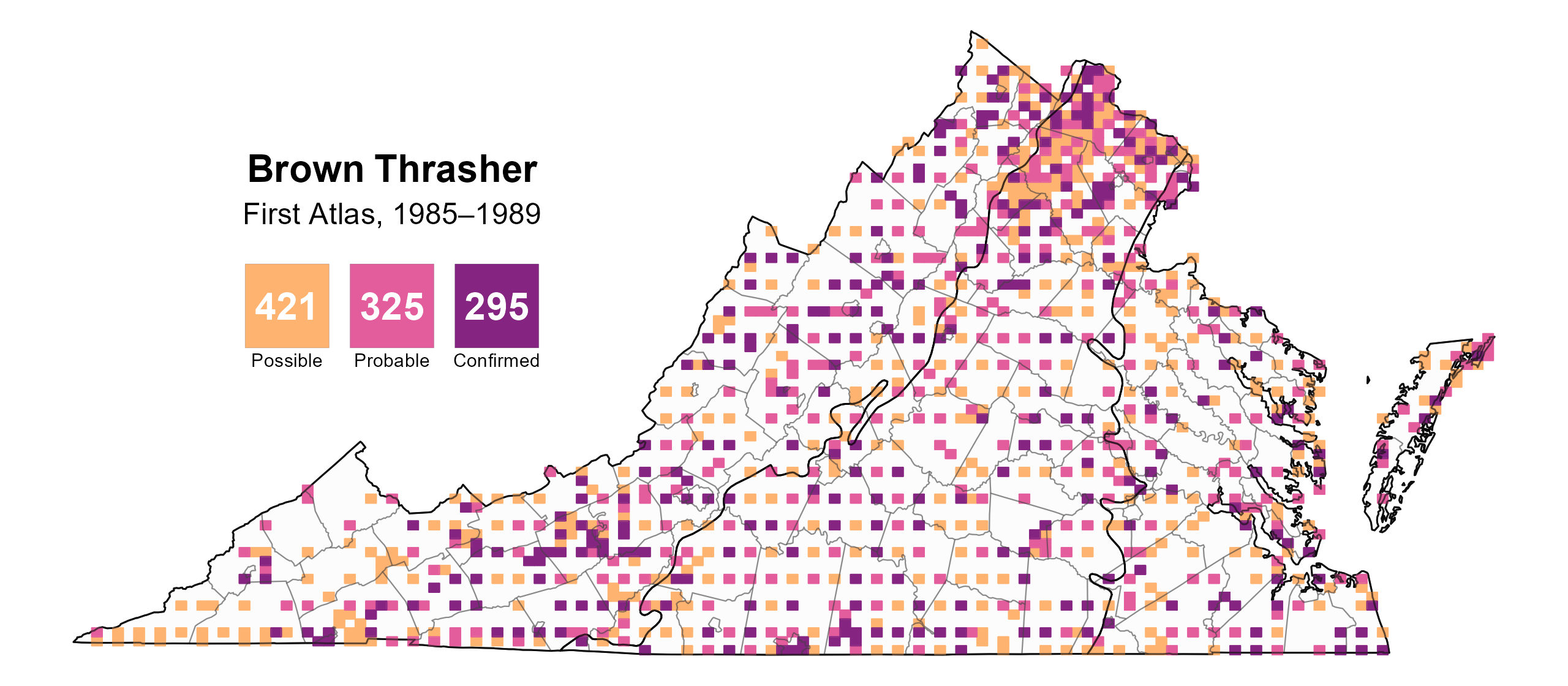
Figure 3: Brown Thrasher breeding observations from the First Atlas (1985–1989). The colored boxes illustrate Atlas blocks (approximately 10 mi2 [26 km2] survey units) where the species was detected. The colors show the highest breeding category recorded in a block. The numbers within the colors in the legend correspond to the number of blocks with that breeding evidence category.

Figure 4: Brown Thrasher phenology: confirmed breeding codes. This graph shows a timeline of confirmed breeding behaviors. Tick marks represent individual observations of the behavior.
Population Status
Brown Thrasher relative abundance was estimated to vary across the state, with the highest abundance levels in the southeastern corner of the Coastal Plain region (Figure 5). However, relative abundance was generally high throughout most of the Coastal Plain region, more moderate in the Piedmont region, and lower in the Mountains and Valleys region, especially in areas of contiguous forest that were lacking open habitats.
The total estimated Brown Thrasher population in the state is approximately 629,000 individuals (with a range between 444,000 and 892,000). Based on the North American Breeding Bird Survey (BBS), the Brown Thrasher population experienced a significant decline of 0.8% annually from 1966–2022 in Virginia, and between Atlas periods, Brown Thrashers decreased by a nonsignificant 0.26% per year from 1987–2018 (Hostetler et al. 2023; Figure 6).

Figure 5: Brown Thrasher relative abundance (Second Atlas, 2016–2020). This map indicates the predicted abundance of this species at a 0.4 mi2 (1 km2) scale based on environmental (including habitat) factors. Abundance values are presented on a relative scale of low to high.
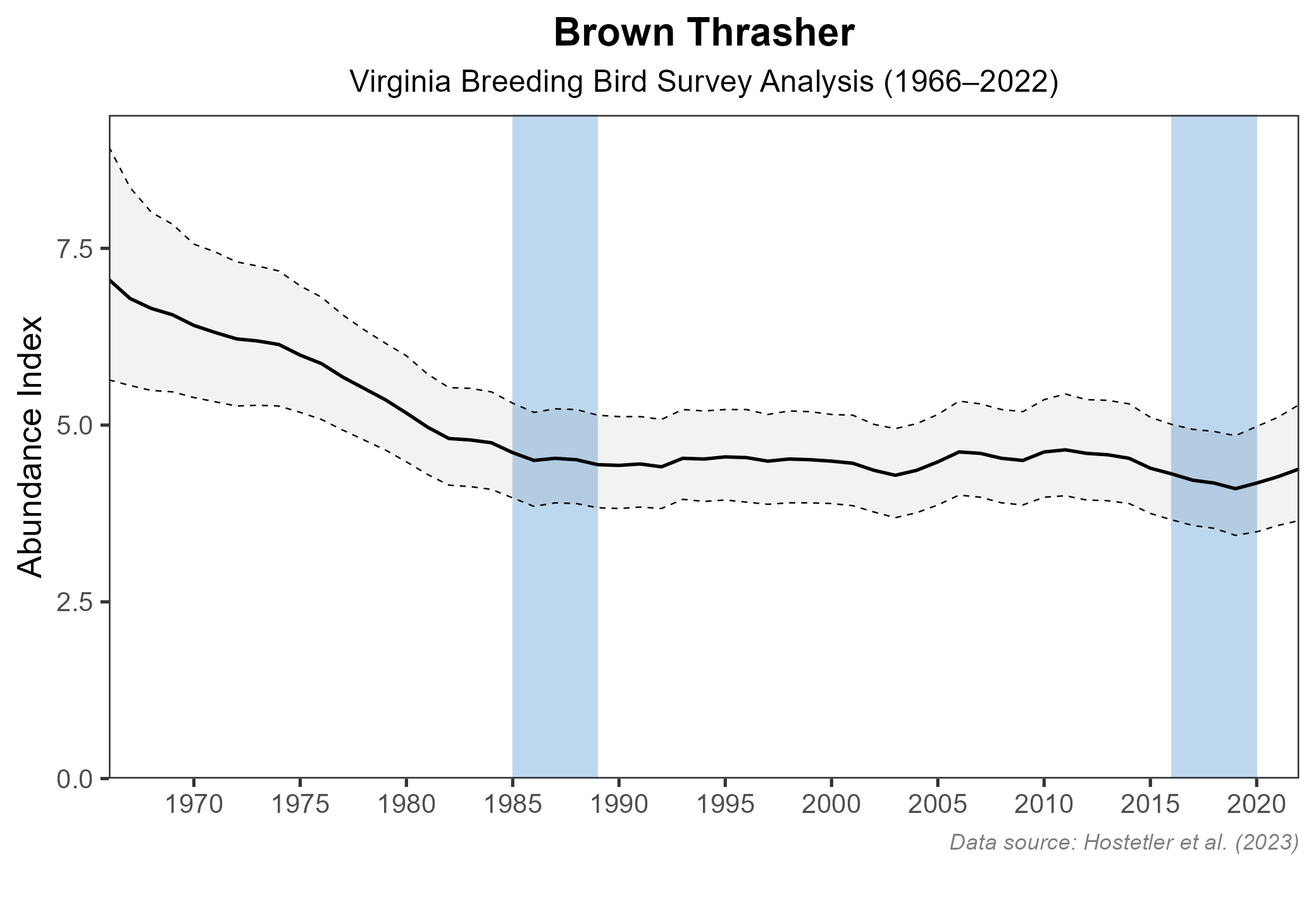
Figure 6: Brown Thrasher population trend for Virginia as estimated by the North American Breeding Bird Survey. The vertical axis shows species abundance; the horizontal axis shows the year. The solid line indicates the estimated population trend; there is a 97.5% probability that the true population trend falls between the dashed lines. The shaded bars indicate the First and Second Atlas periods.
Conservation
Although Brown Thrashers have experienced a slight decline in the state, they are generally common throughout Virginia and their range, and they are not considered a species of special concern in the state. Although no specific conservation projects are underway in the Commonwealth for this species, any measures that focus on preserving shrubby, forest edge habitats will benefit this species (Cavitt and Haas 2020).
Interactive Map
The interactive map contains up to six Atlas layers (probability of occurrence for the First and Second Atlases, change in probability of occurrence between Atlases, breeding evidence for the First and Second Atlases, and abundance for the Second Atlas) that can be viewed one at a time. To view an Atlas map layer, mouse over the layer box in the upper left. County lines and physiographic regional boundaries (Mountains and Valleys, Piedmont, and Coastal Plain) can be turned on and off by checking or unchecking the box below the layer box. Within the map window, users can hover on a block to see its value for each layer and pan and zoom to see roads, towns, and other features of interest that are visible beneath a selected layer.
View Interactive Map in Full Screen
References
Cavitt, J. F., and C. A. Haas (2020). Brown Thrasher (Toxostoma rufum), version 1.0. In Birds of the World (A. F. Poole, Editor). Cornell Lab of Ornithology, Ithaca, NY, USA. https://doi.org/10.2173/bow.brnthr.01.
Hostetler, J. A., J. R. Sauer, J. E. Hines, D. Ziolkowski, and M. Lutmerding (2023). The North American breeding bird survey, analysis results 1966–2022. U.S. Geological Survey, Laurel, MD, USA. https://doi.org/10.5066/P9SC7T11.


